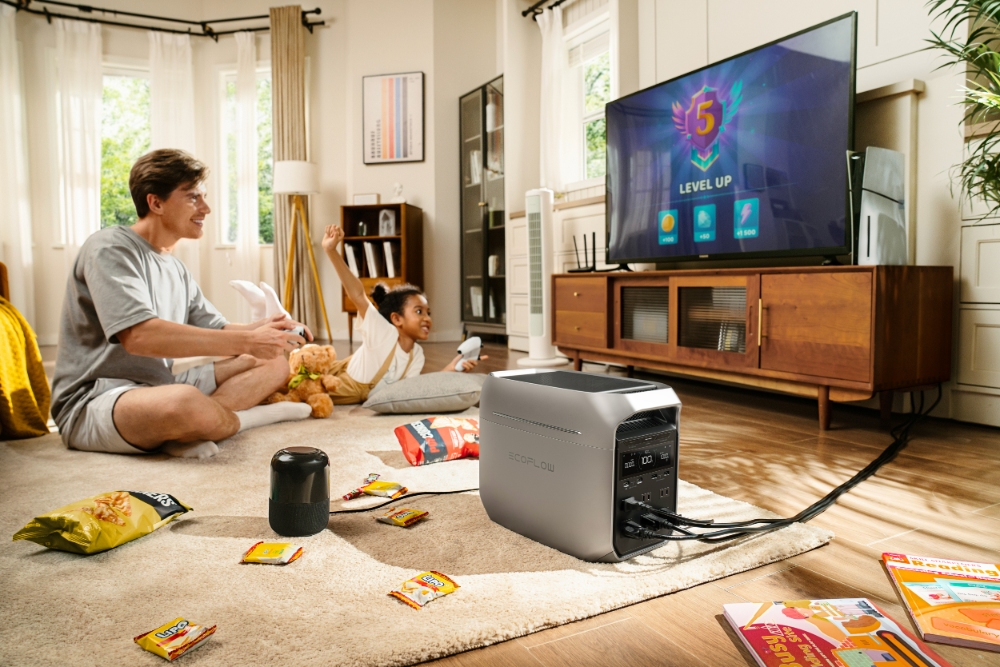What’s the Average Yearly Increase in U.S. Electricity Prices?
- The National Trend: How Much Are Prices Really Going Up?
- Location Matters: The Cost of Electricity Per kWh by State
- Why Are These States So Expensive?
- Behind the Bill Shock: Why Your Electricity Costs More
- How You Can Fight High Costs
- The Final Step: Control Your Home's Power
- Conclusion: Take Charge of Your Energy Future
- 5 Key Questions Answered
If your monthly electricity bill keeps going up, you’re not imagining it. Across the United States, homeowners face rising power costs of electric kwh. This change turns a predictable utility expense into a major financial concern.
This isn't a temporary spike. It's a long-term trend. Complex factors drive this trend, and they affect everything from fuel sources to the power lines in your neighborhood.
This article breaks down the numbers behind your rising electric bill. We will look at historical data, see which states pay the most, and explain the key reasons for the higher prices. Most importantly, we will show you practical steps to manage these costs and gain more control over your home’s energy future.
The National Trend: How Much Are Prices Really Going Up?
For decades, the cost of electricity in the U.S. grew slowly and steadily. That pace has now sped up. Data from the U.S. Energy Information Administration (EIA) shows the average residential cost per kilowatt-hour (kWh) has climbed steadily for the last two decades.
In 2015, the average American household paid about 12.65 cents per kWh.
By early 2025, that number climbed to over 17 cents per kWh, and in many regions, it is much higher.
The national average increases by about 3-4% each year, a rate that often beats inflation. This costs the average family hundreds of extra dollars per year. Experts predict this trend will continue, as many factors point to even higher prices in the future.
Location Matters: The Cost of Electricity Per kWh by State
Where you live heavily influences your electricity bill. Local fuel sources, state regulations, and even climate cause power costs per kilowatt-hour to vary widely. Some states have low rates, but people in other states pay double the national average.
As of early 2025, these states consistently have the most expensive residential electricity:
How Much Is a Kwh of Electricity?
State | Average Cost per kWh (Cents) |
Hawaii | 45.1 |
California | 32.4 |
Massachusetts | 31.95 |
Connecticut | 31.5 |
New Hampshire | 30.2 |
Rhode Island | 29.8 |
Maine | 27.5 |
New York | 24.1 |
Alaska | 23.9 |
Vermont | 22.8 |
Why Are These States So Expensive?
Hawaii: The state is isolated, so it must import petroleum to generate electricity. This makes the state vulnerable to swings in global oil prices.
New England (MA, CT, NH, RI, ME): These states have few local fuel sources. They depend on natural gas that comes through congested pipelines, especially in winter when people need more heating. This supply problem drives up the power cost per kilowatt-hour.
California: The state has ambitious renewable energy goals. It invests a lot in grid upgrades to prevent wildfires and manage a complex energy system. Consumers pay for these infrastructure costs through their bills.
When you understand these regional differences, you can see the bigger picture of why your own electricity costs change.
Behind the Bill Shock: Why Your Electricity Costs More
Electricity prices rise for many reasons. A mix of connected factors puts pressure on the whole system that generates and delivers power.


1. Unpredictable Natural Gas Prices
The U.S. uses natural gas to generate more electricity than any other source. Global market forces, like international demand and supply chain problems, control its price. When the price of natural gas spikes, it costs more to generate electricity. Utility companies then pass that extra cost directly to you.
2. An Old and Expensive Grid
Utility companies built much of America's electrical grid over 50 years ago. This old system needs constant work, repairs, and upgrades to stay reliable and safe. Utilities across the country spend billions of dollars to update power plants and replace old lines. You pay for these huge projects through higher rates on your bills.
3. The Shift to Renewable Energy
The country is shifting from fossil fuels to cleaner sources like solar and wind. This move helps the environment, but it costs a lot of money upfront. Companies must spend billions to build new solar farms and wind turbines. Building these new systems and connecting them to the old grid makes your rates go up for now.
4. We Are Using More Electricity
Our world uses more electricity every day. Data centers for AI, more electric vehicles (EVs), and the switch to electric appliances all put huge demand on the grid. When demand grows faster than supply, it pushes prices up for everyone. The grid must expand to meet this new demand, which costs a lot of money.
5. Climate Change and Bad Weather
Worse and more frequent weather events damage our power systems. Heatwaves drive record demand for air conditioning. Hurricanes, wildfires, and ice storms damage power lines and cause major outages. The cost to fix this damage and make the grid stronger is another reason your rates go up.
How You Can Fight High Costs
You can't control fuel prices or what utility companies spend, but you are not powerless. You can take real steps to use less electricity and lower your monthly bills.
Check Your Home for Energy Waste: Find where your home wastes energy. Look for air leaks around windows and doors and check your attic insulation. You can seal leaks and add insulation. These are cheap fixes that save you a lot of money.
Use Major Appliances Wisely: Your washer, dryer, and dishwasher use a lot of power. Run them with full loads only. If your utility offers "time-of-use" rates, use these appliances during off-peak hours when the cost per kWh is lower.
Switch to Efficient Lights and Appliances: Replace old lightbulbs with LEDs. They use up to 80% less energy. When you replace an old appliance, choose a model with the ENERGY STAR label. This label shows it uses less power.
Manage Your Thermostat: Heating and cooling use the most energy in most homes. Install a smart thermostat to use your HVAC system better. It can automatically adjust the temperature when you are away or asleep.
The Final Step: Control Your Home's Power
If you want a long-term solution, a bigger approach is becoming popular. Saving energy is important, but it still leaves you dependent on the grid, where costs always go up.
The next step is to create your own power system. A whole-home power solution combines solar panels with a home battery. A powerful unit like the EcoFlow DELTA 3 Ultra offers a substantial 3.6kW output, giving you a tangible first step towards this energy independence. This system lets you generate, store, and control your own electricity.
This system completely changes how you use the power grid. Instead of buying electricity when prices are high, you can use free energy from your battery. This protects you from outages and gives you a powerful tool to fight high utility costs. You get energy security and predictable bills for years.
Conclusion: Take Charge of Your Energy Future
Electricity prices will likely keep rising. The mix of high fuel costs, grid upgrades, and growing demand will continue to push your cost per kWh higher.
However, when you understand these issues, you can start to take control. You can use energy-saving habits and make smart upgrades to your home. This will help you use much less power and reduce the hit to your wallet. If you want true energy independence, a whole-home power solution offers a way to a more stable and predictable energy future. The power to lower your bills is in your hands with a powerful, reliable solution like the EcoFlow DELTA 3 Ultra.


5 Key Questions Answered
Q1. What is a kilowatt-hour (kWh) exactly?
A: Your electric bill tells you how many kilowatt-hours (kWh) you use. One kilowatt-hour (kWh) is the amount of energy it takes to run a small heater for an hour. Like leaving a regular light bulb on for 10 hours straight, this is another way to think about it. The last number on your bill is the total amount of money you spent on all the kWhs your home used that month.
Q2. Why do I have to pay more for power in the summer and winter?
A: In the summer and winter, everyone uses more electricity at the same time, which makes your power bill go up. Everyone uses their air conditioners in the summer. A lot of people use electric heaters in the winter. The power grid has to work a lot harder because of all the use. To make enough electricity for everyone, power companies have to work harder and use more expensive fuel. They charge you more to cover these extra costs.
Q3. Can I pick my power company to get a better deal?
A: It might be possible, but it depends on the rules in your state. You can choose your power company in some states, just like you can choose your phone plan. This gives you the chance to find a better deal. This is how things work in Texas and Ohio. In some states, though, you can only buy power from one local company, so you have no choice. You can find out what the rules are in your area by searching for your state's name and "choose electricity provider" on the internet.
Q4. What is "vampire power" and how does it raise my bill?
A: "Vampire power" is a real thing. It's the electricity that your electronics use even when you think they're off. This hidden energy use can add up and cost you an extra 10% on your bill each month. This often happens with:
Your TV, even when it's off (if it has a little light on)
Chargers for phones that are still plugged into the wall
Sleep mode on computers or game consoles
Unplug things you don't need or use a power strip with an on/off switch to fix the problem easily.
Q5. How much money can I actually save by using solar panels?
A: You can save a lot of money with solar panels. A lot of people who get them see their electric bills go down by 70%, and some bills go down to nothing. There are a few things that affect how much you save, such as how much sun your roof gets and how much electricity costs in your area. You will save more if you live in a state where electricity costs a lot. Also, if your solar panels make more power than you use, your power company might pay you for the extra power, which would save you even more.